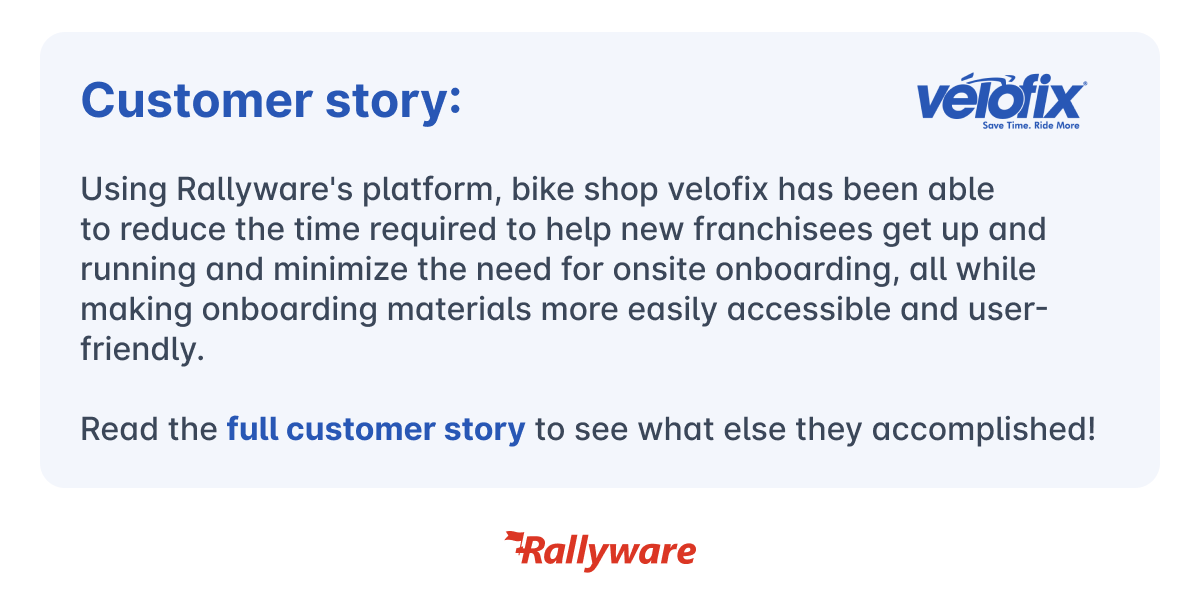3 KPIs Direct Selling Leaders Need To Be Tracking in 2023
The Crucial Role of Onboarding Technology in Sales Performance
Consider your first few days with a new company. What did they look like? Maybe the entire process was overwhelming, perhaps it is not in-depth enough, leading to a lack of clear direction and focus. Your engagement, along with confidence levels, may have begun to wane. And if you’re reading this, you’re probably a leader, director, or administrator at corporate HQ. Now imagine you’re a seller on the ground or in the field. The lack of actionable onboarding or training for sales reps can be disastrous for someone in that position.
Amid a backdrop of slowing consumer spending, increasing turnover rates among part-time employees, and numerous retailers grappling with overstocking, the significance of a strong onboarding process cannot be overstated.
How can you supercharge new sellers for sales success, and sustain that momentum and engagement throughout their journeys?
What is onboarding?
To offer a brief definition, onboarding typically involves activities such as completing paperwork, receiving training and learning, meeting any relevant individuals, and getting acquainted with a company’s branding and culture. It can be considered part of the overall learning enablement experience.
Overall, the ultimate goal of onboarding is to help individuals become familiar with the company, understand their operations and processes, and develop the knowledge and skills necessary to be productive and successful. Effective onboarding can have a significant impact on retention, engagement, and overall results (research from Gallup found that employees who felt they had an exceptional onboarding experience are 2.6 times as likely to be very satisfied)!
Onboarding strategies strive to establish the crucial groundwork for a strong start to a relationship between companies and members of their sales force. However, how can you not only lay the foundations but foster a lasting connection?
Why onboarding technology is important for sellers and training for sales reps
It can take some time for new hires to acclimate and get up to speed. Yet, the timeline is arguably accelerated when it comes to members of the sales force, as sellers must become profitable quickly.
Onboarding processes can differ between members of the workforce at large, and sellers, the key differences revolving around the specific skills, goals, and performance metrics associated with their roles.
For instance, traditional employee onboarding aims to integrate new hires into the company structure and culture while ensuring they can perform their job functions efficiently.
Seller onboarding, on the other hand, is often goal-oriented, with a focus on achieving sales targets and revenue goals. Sellers need to be trained to meet specific sales objectives and quotas.
As sales team members are often evaluated based on sales metrics such as revenue generated and customer acquisition, onboarding for sellers includes understanding how their performance impacts these metrics. That is, onboarding technology helps members of the sales force learn behaviors they will use to sell profitably and thus, it is essential for sales performance.
Given these distinctions, a robust onboarding strategy and the corresponding technology is even more essential for members of the sales force.
Focus needs to be on scaling the efficiency of each individual seller – big time.

What to look for in onboarding technology and training for sales reps
As mentioned, onboarding shouldn’t be considered a ‘set it and forget it’ type of process – one that may consist of a benefits information package and several training videos and exercises.
Training content should be customizable and configurable, and the experience personalized for each individual, based on their goals and business activities. That is to say, onboarding and training for sales reps shouldn’t be a one-size-fits-all experience. They should mold to the preferences and actions of the seller herself.

Let’s imagine Joan has recently come onboard as a distributor for a direct seller. Her goal is to make $100 in sales per week. If she’s told to “watch this YouTube video for your onboarding,” she might roll her eyes and think, “I don’t have time for this.” Now let’s say she downloads an app on her mobile device that shows her a push notification saying “Joan, complete this onboarding quiz to help you reach $100 in sales this week,” she would be more likely to tap on this content and interact with it. Because it’s relevant to her. Even better if this notification is shown to her just in time–for instance, the time of day when the company’s distributors have been shown, through data, to be most likely to have downtime.
The ideal platform should have elements of gamification to make the onboarding journey fun and engaging, and to celebrate the daily wins – however big or small they may be. These gamification elements should be smart, meaning that they respond to context, to the seller’s goals and progress so far, to be as effective as possible.
An all-in-one performance enablement platform such as Rallyware features the tools listed above, giving sellers what they need to sell more. Providing guidance on the next action to take, as they progress in their individual career journeys. They become profitable quicker, with better engagement and results. Our Global Sales Force Report 2022-23 has more on this, by the way.
For new sellers, this means no guesswork, no lack of direction or abundance of training materials which may or may not be relevant. Instead, fun, interactive material that’s presented right in time. Now doesn’t that sound like a great onboarding experience?
Schedule your demo to see how Rallyware can offer a personalized onboarding experience to every member of your sales force!
News and Insights on Workforce Training & Engagement
We’re among top-notch eLearning and business engagement platforms recognized for effective training and talent development, helping to empower distributed workforces
Subscribe
